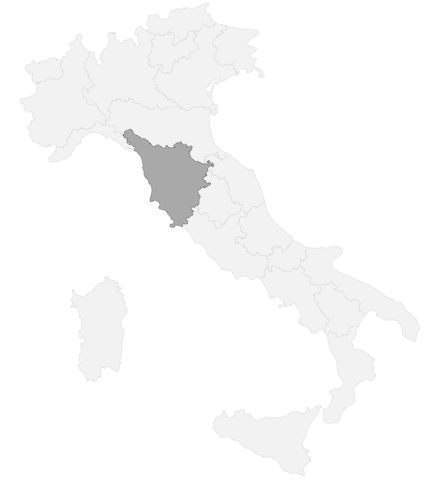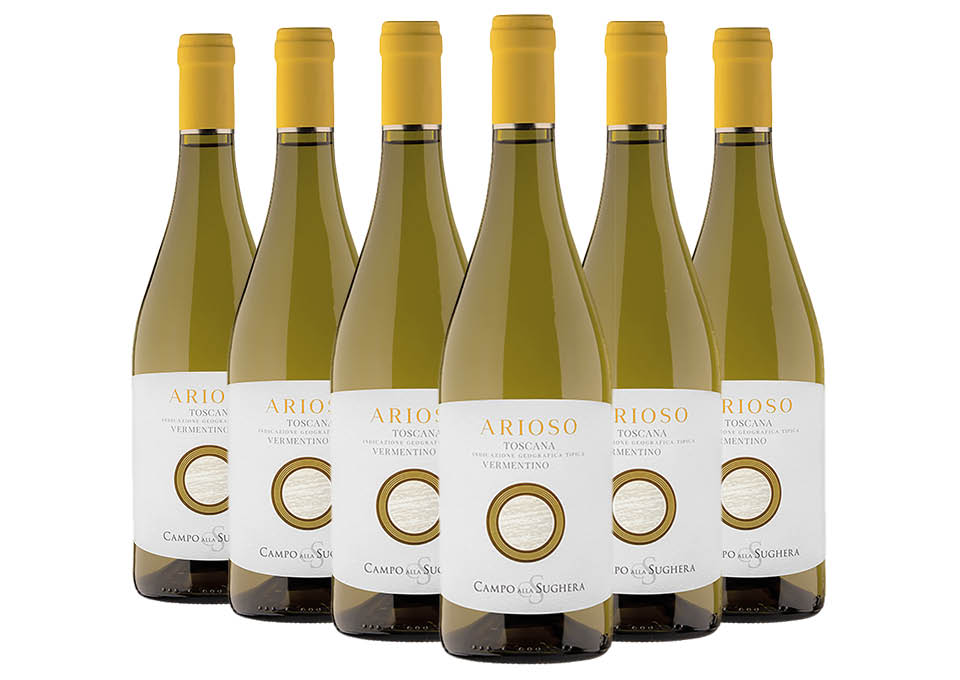Sauvignon Blanc, Tuscany
Sauvignon Blanc is one of the most loved and widespread white grape varieties in the world. It is a variety native to the Loire Valley region which gradually spread to Bordeaux as well. DNA analyzes have revealed its kinship with Savagnin, one of the oldest grapes in central Europe which could be one of the parents of Sauvignon Blanc. As a semi-aromatic variety, it is now grown in many countries around the world, most notably in New Zealand, California, Australia, Chile and South Africa. In Italy, it is mainly present in Friuli Venezia Giulia and Alto Adige. Naturally, pedoclamic conditions that vary from place to place allow Sauvignon Blanc to express its personality in a very different way. An emblematic case of the Loire are the very cold temperatures and high humidity which, in addition to the presence of waterways, allow Sauvignon Blanc to develop the typical acidity in wines from Sancerre and Pouilly-sur-Loire, also famous for its wine. Pouilly-Fumé : these are sharp wines with typical hints of gooseberry, musk, wild herbs and flint that give the palate an aromatic texture that is not easy to taste but much appreciated by connoisseurs. Reaching the Bordeaux area, with the Sémillon, Sauvignon Blanc and Muscadelle grapes, the famous botrytised wines are obtained, that is, resulting from the appearance of noble rot on the berries which gives unique flavors by combining a high acidity with a considerable amount of sugar developed as a result of the dehydration of the cluster: Sauvignon Blanc is also in this case responsible for conferring very delicate and elegant aromas. The yield of Sauvignon in Italy is also very particular, which in the areas of Collio and Colli Orientali del Friuli has found ideal environments to grow and give the best of itself. The structure of the Sauvignon from California and New Zealand is different, in which the tropical scents of white pulp fruits blend pleasantly with the typical herbaceous notes, releasing the more acidic properties of lemon peel and pomegranate in combination with wild herbs such as thyme. , sage, rosemary.
Why buy Sauvignon Blanc
Buying Sauvignon Blanc means first of all being able to familiarize yourself with one of the most widespread and famous white berried varieties in the world. The particular aromatic cut made by Sauvignon Blanc allows it to be considered as a semi-aromatic grape and, for this reason, very transversal with respect to tastes and culinary uses. Given its diffusion, buying this wine means being able to explore very diversified products and being able to deepen different local cultures, all enclosed in the great expressions of a single grape variety.
What is the origin of Sauvignon Blanc?
The origin of the name Sauvignon Blanc probably derives from sauvage (wild). There are two biotypes, that is expressions which, although belonging to the same variety, differ in some character: Sauvignon Piccolo and Sauvignon Grosso.
What are the characteristics of wine made from Sauvignon Blanc grapes?
Sauvignon Blanc produces wines with very recognizable characteristics: the color is usually straw yellow and can take on golden reflections with a fermentation or short aging in wood according to a widespread practice in the Pessac-Leognan area. In these cases the acid tones are diluted until they take on greater density and creaminess, with a pleasant worked note and more fruity scents. Sauvignon Blanc is otherwise recognizable for a marked shade of green apple, passion fruit and a herbaceous note ranging from asparagus to green pepper and basil.
What are the best combinations for Sauvignon Blanc?
Sauvignon Blanc is indicated in combination with grilled white meats, shellfish and fish such as sea bass flavored with lemon and parsley. For some it is also a valid accompaniment to risotto with asparagus, while it is the flagship wine for appetizers based on cold cuts and fresh cheeses.

Tuscan wines are, together with those of Piedmont and Veneto, the most famous Italian wines in the world: great excellences such as Brunello di Montalcino, Bolgheri (primarily Sassicaia Bolgheri Doc) and Supertuscan have made known the excellence of made in Italy in the world. In Tuscany, Sangiovese and indigenous grapes are the protagonists alongside international grapes such as Cabernet and Merlot, in a territory that, like no other, seems to have been born on purpose to produce excellent wines. If a legend widespread at the time of the Medici told that Noah with his ark landed in Tuscany and planted the first vine cuttings, what is certain is that in Tuscany the winemaking tradition is so ancient that, unlike other regions, it surpasses the Romans and the Greeks and reaches up to the Etruscan civilization.
Tuscan red wine? A well-stocked cellar cannot be missing.
Tuscan red wines are the red wines for aging par excellence: Brunello di Montalcino has a longevity that exceeds 20 years, and great surprises in this sense also reserve the Nobile di Montepulciano and Carmignano, less known appellations but of ancient tradition, born from the union of Sangiovese with Cabernet Franc brought to Italy by Caterina de 'Medici. However, Tuscan red wine is also synonymous with conviviality, with Chianti in all its nuances, from the traditional flask to the magnum bottles in wooden boxes of the great selections, and above all with Morellino di Scansano, a wild Sangiovese from Maremma. Last but not least other small appellations such as Sant'Antimo Doc, Rosso di Montalcino and Montecucco, in which Sangiovese is and remains the true protagonist. Finally, some producers have tried their hand at Tuscany with the most cursed of the grapes, Pinot Noir, obtaining very interesting results.
Tuscan white wines: a less known reality to be discovered
In Tuscany there is only one Tuscan DOCG white: Vernaccia di San Gimignano. Born from native grapes, it is said that the wine that cuts and pricks was the favorite of the greatest Florentine genius: Michelangelo Buonarroti. Then there are numerous DOC and IGT appellations, which see Vermentino excel, aged in steel or wood, alongside international grapes such as chardonnay and sauvignon. Trebbiano toscano is another widespread grape variety, which combined with malvasia gives life to the famous Vin Santo, in its various and precious golden declinations such as Vin Santo del Chianti Classico and Vin Santo Occhio di Pernice.
What is the finest Tuscan wine?
The most famous Tuscan red, Chianti Classico, links an ancient legend to its main symbol, the black rooster. In fact, it is said that the cities of Siena and Florence had to decide the territorial boundaries by bringing together two knights, both departed to the crowing of the cock, white for the Sienese and black for the Florentines. The Florentines, much more cunning, kept their black rooster stiff, locked in the cage, in the two days preceding the competition and the poor animal, in a panic, opened the cage immediately went out to sing, even if it was the middle of the night. This early departure with respect to dawn allowed Florence to establish the boundary of its province near the city of Siena, where it still is today, in the heart of the Chianti area.
Which is the longest-lived Tuscan DOCG red wine?
The longest-lived Tuscan DOCG red wine is undoubtedly Brunello : it manages to evolve in the cellar even for more than 20 years, developing extraordinary aromas and thus becoming one of the best meditation red wines in the world.
What is the best Tuscan white wine to pair with fish dishes?
The best Tuscan white wine to combine with fish menus is definitely Vermentino which, born from the vineyards caressed by the sea breezes, manages to enhance seafood dishes thanks to its natural flavor and freshness. Seeing is believing!




